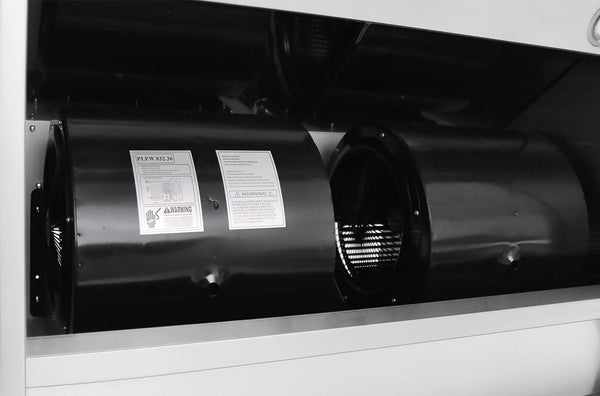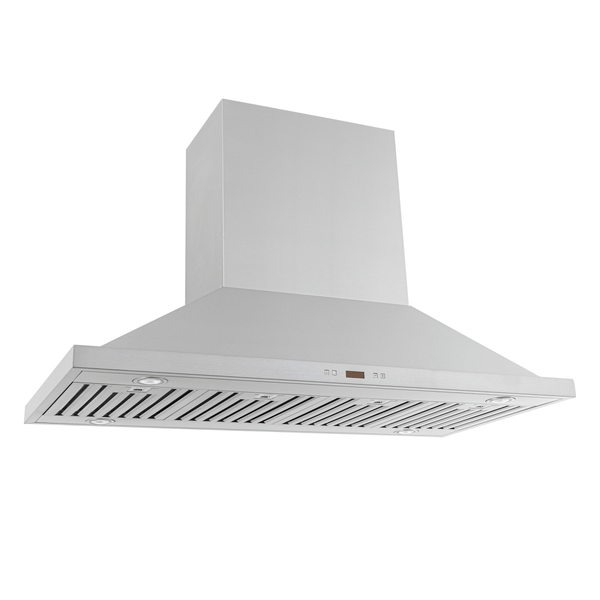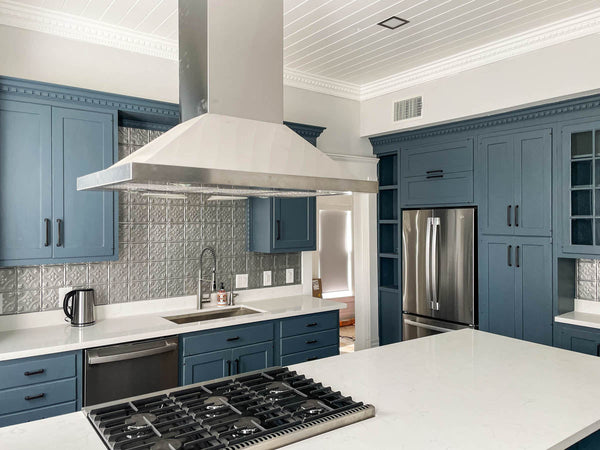Table of Contents
When designing your outdoor kitchen, selecting the right range hood is essential to maintain a pleasant and smoke-free cooking environment. The outdoor range hoods are not only efficient but also durable enough to withstand the elements, both nature's and your cooking!
The choice of material for your range hood makes a significant difference in its performance and longevity.
Why Steel Choice Matters
What is the best steel for an outdoor range hood?
Stainless steel is the most popular choice for outdoor range hoods, providing both aesthetic appeal and resistance to weather-related wear and tear. Specifically, 304-grade stainless steel is recognized for its quality, often recommended for outdoor use due to its remarkable ability to resist rust and corrosion.
When you choose a range hood made from high-quality stainless steel, you're investing in a fixture that's designed to serve your outdoor cooking needs for years to come.
Note - For more than 20 years we have sold quality outdoor range hoods, You can see all of them here!
Comfort in your outdoor kitchen hinges on these details, so take time to assess your space and choose a range hood that meets these criteria for an optimal outdoor cooking experience.
Understanding Outdoor Range Hoods
When setting up your outdoor kitchen, it's essential to understand that the best range hoods for such environments are specifically designed to handle elements like smoke, grease, excessive heat, and varying weather conditions.
Differences Between Indoor and Outdoor Range Hoods
Key Differences:
- Durability: Outdoor range hoods are built to withstand harsher conditions compared to their indoor counterparts
- Material Quality: High-quality 304 stainless steel is preferred for its resistance to corrosion and weather
- Ventilation Power: Outdoor vent hoods need more powerful ventilation to cater to the open nature of outdoor kitchens
- Smoke Handling: Must handle higher volume of smoke and odors produced by grilling
Crucial Features of Outdoor Range Hoods
Essential Features to Look For:
- Higher CFM: Critical for outdoor range hoods due to high smoke and grease output from grilling
- High-Performance Motor: Effectively removes smoke and improves air quality
- 304-Grade Stainless Steel: Ensures longevity and protection from the elements

Best Steel for Outdoor Range Hoods
Selecting the best steel for your outdoor range hood is crucial for longevity and performance. Premium materials like 304 stainless steel offer exceptional durability and corrosion resistance, making them ideal for withstanding outdoor elements.
Benefits of 304 Stainless Steel
304 Stainless steel is renowned for its weather-resistant qualities, making it an excellent choice for outdoor appliances. Your outdoor range hood will be exposed to various weather conditions, and 304 stainless steel's corrosion-resistant properties ensure that it remains unaffected by harsh climates.
By choosing a quality outdoor-rated hood range, you can have complete trust in the material's quality to sustain its beautiful appearance and functionality over time.
304 Stainless Steel for Durability
The specific grade known as 304 stainless steel is often regarded as the superior option for outdoor appliances, including ventilation.
Composition: 18% chromium and 8% nickel, giving it remarkable resistance to oxidation and corrosion.
This makes 304 stainless steel not just durable, but also a material that maintains its integrity even when exposed to the intense heat of outdoor cooking environments.
Ease of Cleaning and Maintenance
Regular cleaning ensures that your outdoor range hood retains its quality and stainless appearance, without the need for rigorous or specialized installation and maintenance routines.
Cost vs. Value Analysis
When selecting the best steel for outdoor range hoods, you need to balance between cost and value. Stainless steel, the most common choice, varies in price and quality.
304 vs 430 Stainless Steel Comparison
304 Stainless Steel:
- Characteristics: Resistant to corrosion and staining
- Cost: Higher initial cost
- Value: Offers durability, which translates to less maintenance cost over time
430 Stainless Steel:
- Characteristics: Less nickel content, moderately resistant to corrosion
- Cost: More budget-friendly than 304
- Value: Will require more care and potential replacement sooner. Don't use outside!
Additional Cost Considerations
- Size and Thickness: A thicker gauge means a sturdier hood but at an increased price
- Finish Type: Brushed finish hides fingerprints and watermarks better than polished
- Brand Reputation: Look for reputable brands with long track records, warranties, and customer service
In short, weigh up-front costs against the longevity and maintenance cost.
Frequently Asked Questions
Frequently Asked Questions
You should consider the steel's corrosion resistance, its grade, the thickness, and finish. These factors will influence the longevity and performance of the range hood in outdoor environments. Look for a quality 304 stainless steel hood from a company that has been around the block a time or two.
The grade of stainless steel directly impacts its ability to withstand corrosion and high temperatures. Higher grades, like 304 stainless steel, offer better durability and resistance to rust and tarnishing.
Range hoods designed for indoor use aren't suitable for outdoor installation due to differing material and construction requirements. Outdoor hoods can handle weather and temperature extremes.
Regular maintenance, including cleaning with a gentle portion of dish soap and warm water or a specialized stainless steel cleaner, is necessary to preserve the finish and prevent the buildup of grease and debris which leads to corrosion.
Additional Outdoor Kitchen Articles
Explore more resources to perfect your outdoor cooking space:
Why You Need An Outdoor Range Hood!












